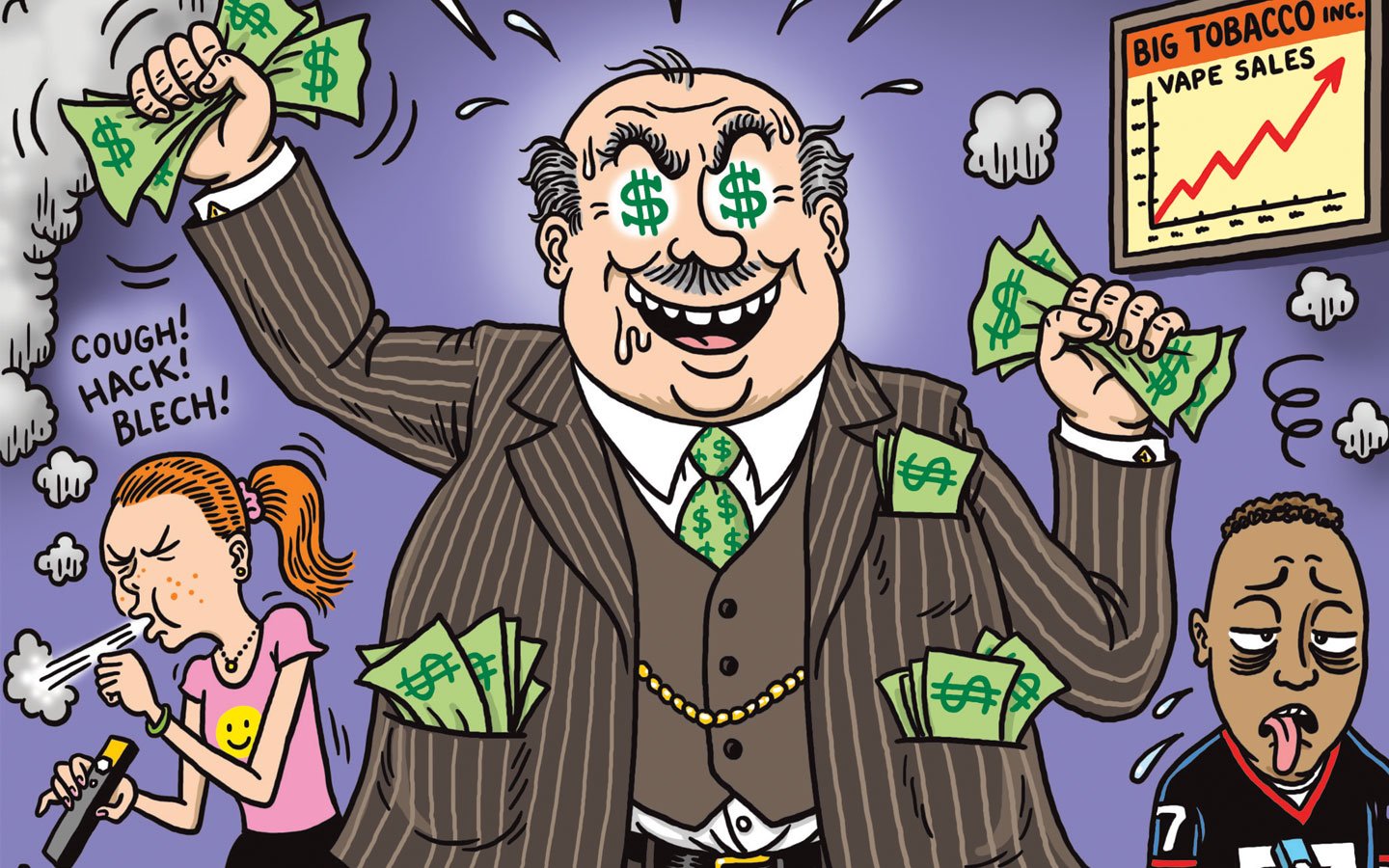Margarida Ferreira, 15, first tried a Juul in the summer of 2017. Juul is a super-popular brand of e-cigarette, also known as a vape. A friend had gotten a Juul from her older sister and encouraged Margarida to try it.
“I didn’t like it at first,” Margarida says, “but back at school, everyone had one.” In the bathrooms, the sweet smell of the flavors from Juul pods—such as mango or “cool cucumber”—hung in the air. “I thought, ‘It’s fruit. It can’t be bad for you,’ ” she recalls.
Before long, Margarida was vaping every day. “I couldn’t stop,” she says. “Now it’s always in the back of my head: ‘Where’s my Juul?’ ”
Walk into a middle or high school today, and you won’t find many students who smoke cigarettes. But according to a 2017 study by the National Institutes of Health, more than 1 in 3 high school seniors and nearly 2 in 10 eighth-graders have tried “vaping” (using e-cigarettes or a similar device).
Most teens don’t realize e-cigs are as addictive as tobacco cigarettes, and Juul is by far their favorite brand. Its devices look like flash drives, so they often escape detection by adults. Sales of the gadgets, which debuted in 2015, jumped more than 600 percent last year.
Now the U.S. government says it is investigating whether Juul Labs intentionally marketed its product to teens, which is illegal. Officials also announced last month that the government was planning to take measures that would help prevent sales of most flavored e-cigarettes to people under the age of 18.




